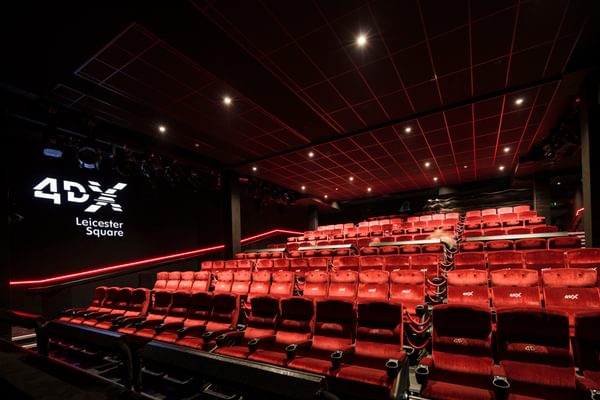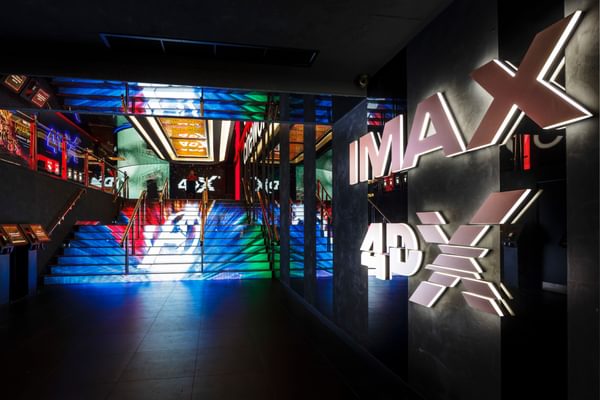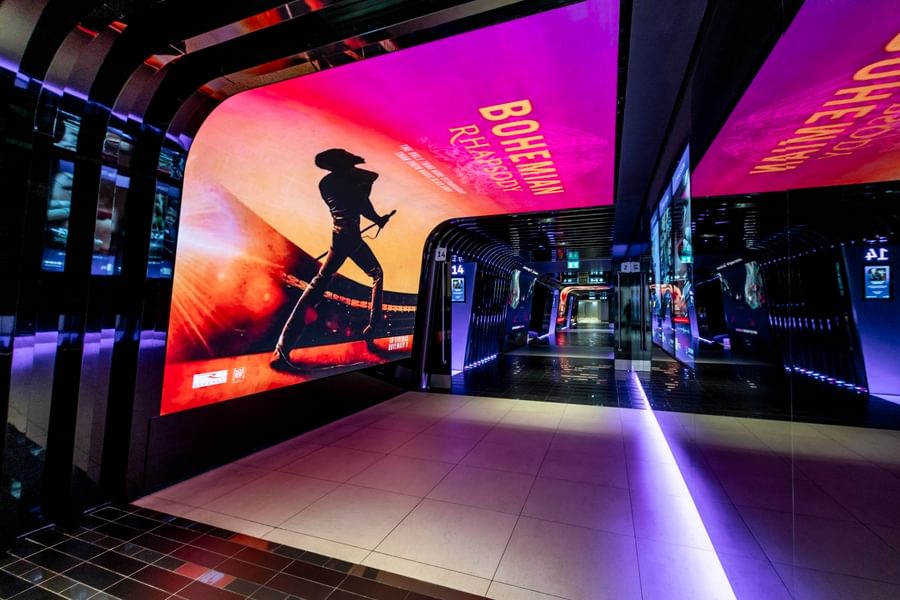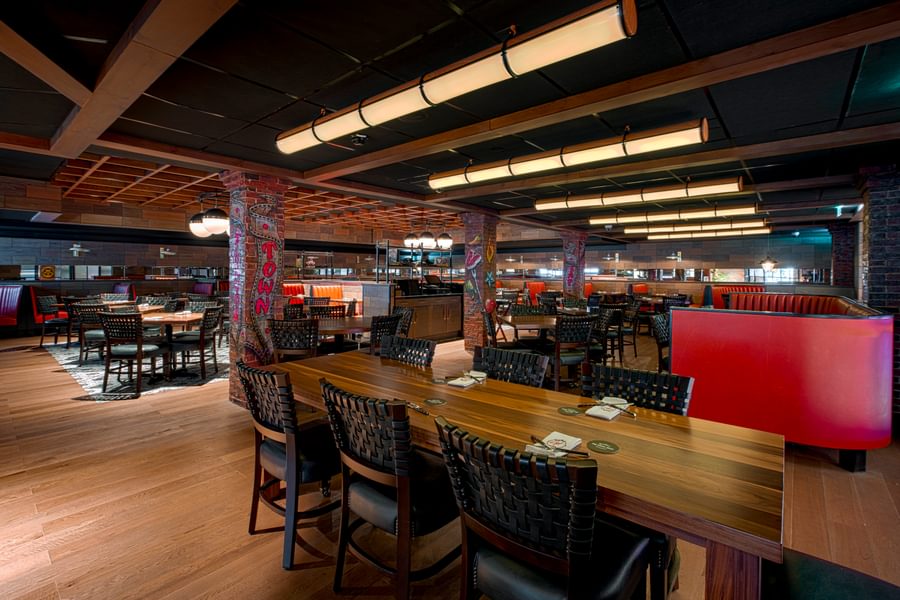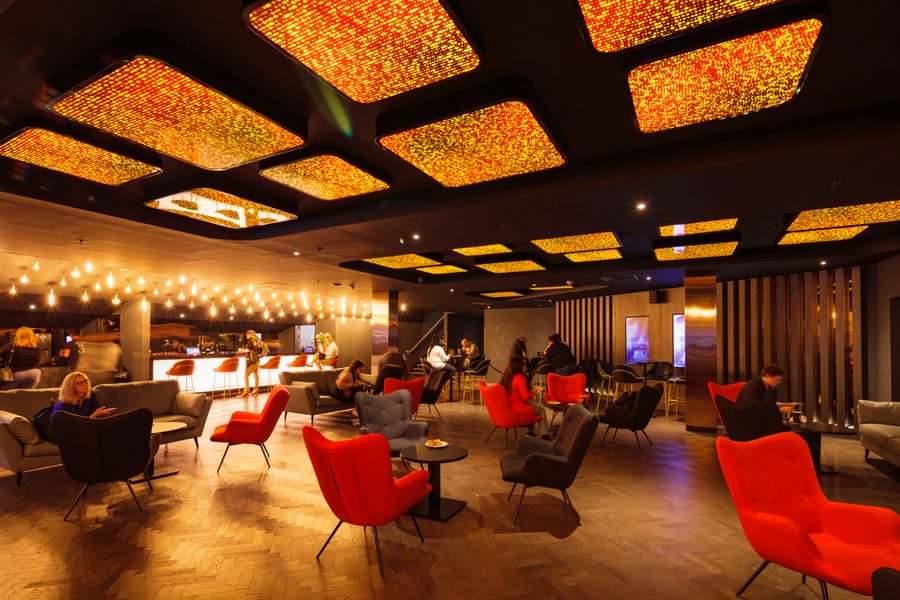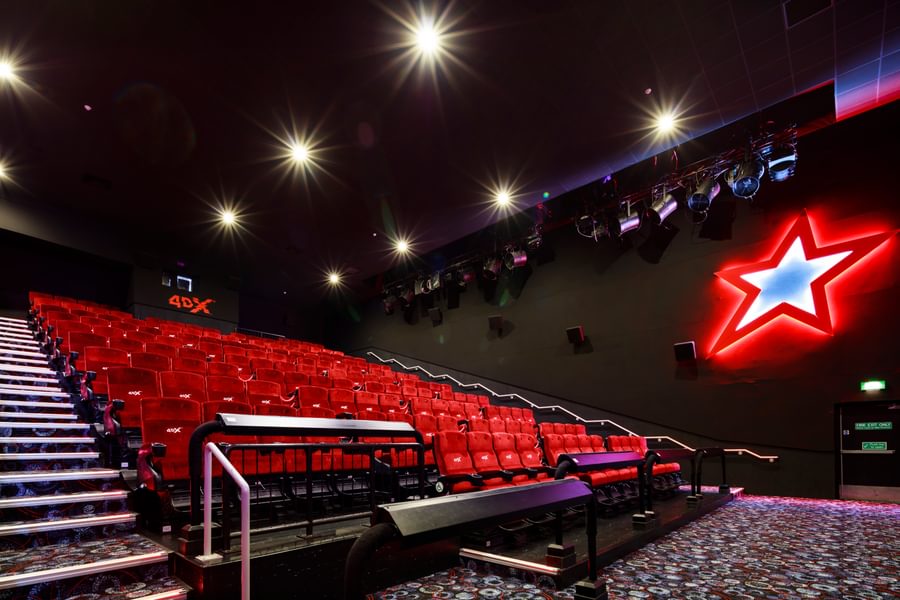
People profile: David Wallace talks about Chapman Taylor’s experience at the cutting edge of cinema design
Chapman Taylor has a thriving hospitality and leisure practice, responsible for many of the largest and most cutting-edge cinema developments in the world. A key component of the team is Director David Wallace, who here tells us about his background, his extensive experience working in the leisure and hospitality fields and the extraordinary opportunities currently opening up for ambitious cinema designers.
Tell us a little about your background?
I grew up in Ayr, a small Scottish fishing town. As a child I was always either drawing, designing or making things, so it was no surprise that I ended up studying Architecture – at the Glasgow School of Art. I then worked in Glasgow for several years before relocating to Singapore in 1994. The UK was then slowly recovering from a long recession, whereas Asia was booming. I was single, ambitious and had a keen interest in Asia, so it was a logical move for me. It was an exciting time and place for a young architect.
While in Singapore, I was contacted by Warner Brothers’ (WB) in-house architect, whom I had previously met in Glasgow. WB had recently opened a new division to develop cinema projects worldwide. The worldwide cinema industry was then in decline and it needed considerable investment, foresight and leadership to turn it around. WB decided to lead that charge. I took the job and moved to Los Angeles in early 1995, then to London later that year. For the next 15 years, WB built 170 projects in 15 countries. Many of the world’s leading cinema companies grew out of that small WB team.
After a few years based in London, I moved to Rome for two years and then spent eight years in Shanghai. When I moved to China, I took over the lead role for design and construction worldwide as Senior VP for the division. In 2010, with the worldwide cinema industry growing at an impressive rate, WB decided it was time to cease development and let others take the lead.
Once again, the UK was in recession, whereas China was booming. My family and I had enjoyed living in Shanghai, so we decided to stay and I secured the MD role for DWP China, a leading design company specialising in hospitality. Working as an architect during this period in China’s growth was an intense, amazing and fun experience!
However, after eight years in Shanghai, my family decided to move back to the UK. After a few years working back in Glasgow, Chapman Taylor asked me to help develop its leisure portfolio. I had known Chapman Taylor for many years as its contact at WB, so I knew how good it was. I joined as Leisure and Hospitality Director in 2015.
What does your role at Chapman Taylor entail?
My immediate role when I joined was to develop new sectors in new territories, particularly leisure and hospitality projects. The UAE economy has been growing since 2015, with leisure and hospitality part of that growth. I now spend most of my time in Dubai, where we are very busy with many cinema projects at design stage and on-site.
Auditorium design is very technical and requires detailed knowledge of acoustics, sightlines, projection angle, fire exiting etc. There is also now an increasingly substantial hospitality element in the lobby designs. Projects in Dubai move fast, so we have developed a number of design teams in our London and Dubai studios to manage the workload. The Bangkok studio has also started to assist us. Chapman Taylor’s many studios worldwide, and their ability to give support when needed, has been crucial to our success in managing our increasing workload.
Which completed cinema projects stand out in your mind?
The Reel Cinemas development at Dubai Mall was a very ambitious project. When Chapman Taylor was approached, we were asked by the client what we thought should be done with the existing building – there was no brief. We suggested that it should be completely renovated to become the biggest and best cinema in the world. We had already designed and built the largest cinema in the world, the 30-screen complex at Star City in Birmingham (I worked alongside Chapman Taylor on that project when I was at WB). The design finally settled at 26 screens, the largest in the UAE. 14 screens are now completed and the remaining 12 are under construction.
It is a very ambitious and striking project, particularly the use of LED screens throughout the lobbies and hallways. It is also home to a number of world firsts, including the first fully automated click-and-collect system for tickets and F&B. We streamlined the very complicated existing layout to eliminate all the queues and wayfinding confusion, which had been a major operational problem. The cinema complex is the world’s first to be fitted in every theatre with RGB laser projectors and Dolby Atmos sound systems.
Also memorable, the Dolby Cinema at Marina Mall, also in Dubai, is the first Dolby cinema in the UAE. Dolby Cinema is a premium offering for moviegoers which combines spectacular image and sound technologies. This format is considered by many leading film directors to be the very best available. The Dolby technicians working alongside us on the project, who had travelled from California, were real perfectionists – it was vitally important to them that every last detail be geared towards the best possible cinematic experience. It’s a truly beautiful cinema. It is very successful, and we are now building another two Dolby Cinemas in Dubai.
What makes a good cinema design?
Cinema projects are essentially designed in two parts – the auditoria and the lobby. In terms of what makes a good auditorium, screen size and screen proportion are paramount, as are acoustics and sightlines. It sounds simple, but achieving it involves creating a complex relationship between plan and section to optimise all these competing parts to make the whole.
The lobby has a completely different set of criteria. It’s all about the ‘wow’ factor – it needs to impress people as soon as they walk in. It is, in a sense, a stage set – it has to be theatrical in impact. Practically, the lobbies need to work efficiently for good operations. With increased emphasis on F+B, we are designing in hidden back-of-house service corridors, much in the same way as when designing hotel banqueting suites.
What trends can we expect in cinema in the future?
Digital technology has made a massive difference. In the last five years, digital technology has become the design norm for cinemas everywhere. The only cinemas not incorporating digital technology do so deliberately to create a retro feel, using 35mm film much in the same way as some music clubs only play vinyl.
Sound systems are making for an immersive aural experience, with seats connected to be responsive in 4D theatres – moving and jolting to make the filmgoer feel as if they are part of the action. We were the architects for London’ first 4DX cinema, for Cineworld in Wandsworth. Screens are getting bigger and are becoming more curved. There is also an increasing emphasis on comfort – seats are getting wider and more electronics are being incorporated to allow custom adjustments to suit each person.
We will see much more overlapping with other sectors too. We are beginning to see, for example, Dolby Atmos sound systems being used in nightclubs. Cinematic projection is being used in live theatres, and live theatre is being projected into cinemas. There are now hotels, restaurants, bars and even hospitals which have their own cinemas. F&B has always been there, but it’s much more sophisticated and varied now, with offerings from Michelin-starred chefs and celebrity chefs becoming more frequent. Interestingly, we are now seeing televisions changing proportions to suit cinematic formats, which highlights just how much cinema has turned around in the last 20 years.
Rove Downtown hotel cinema - The 49-seat hotel cinema will be the first of its kind to open in the UAE
What cinema projects is Chapman Taylor currently working on?
We have designed a very attractive and hip boutique cinema for the Rove Downtown Hotel in Dubai, which is scheduled to open by mid-summer 2018. Such a project could not have happened successfully without the development of digital projection.
We have also been appointed to renovate and extend an existing 10-screen cinema to create a state-of-the-art, 18-screen complex at Al Ghurair Centre in the old town area of Dubai.
Cineworld is also keeping us busy. We have just renovated the lobby at Cineworld Leicester Square, a world-famous venue for major movie premieres. We are also designing London's biggest cinema at the O2 Arena for Cineworld, which is due to open next year.
Why do major cinema developers like working with Chapman Taylor?
They know how well we know cinema. I have been working in the industry a very long time, and Chapman Taylor has the experience and knowledge to create cutting edge cinema developments – including many of the biggest and best cinemas in the world today. There is a large, global support network at Chapman Taylor, allowing us to realise even the most ambitious development visions. They know that we are credible and that we will deliver.
We are currently looking at many opportunities in Saudi Arabia, now that the kingdom has allowed cinemas to operate for the first time after a 37-year ban. The people of Saudi Arabia love cinema – when they visit Dubai, they will often watch four or five films in a row! There are extraordinary opportunities in that country at the moment, and the big cinema developers need reliable designers with an excellent track-record of creating ambitious and commercially successful cinema complexes. That’s why they keep coming back to Chapman Taylor.
